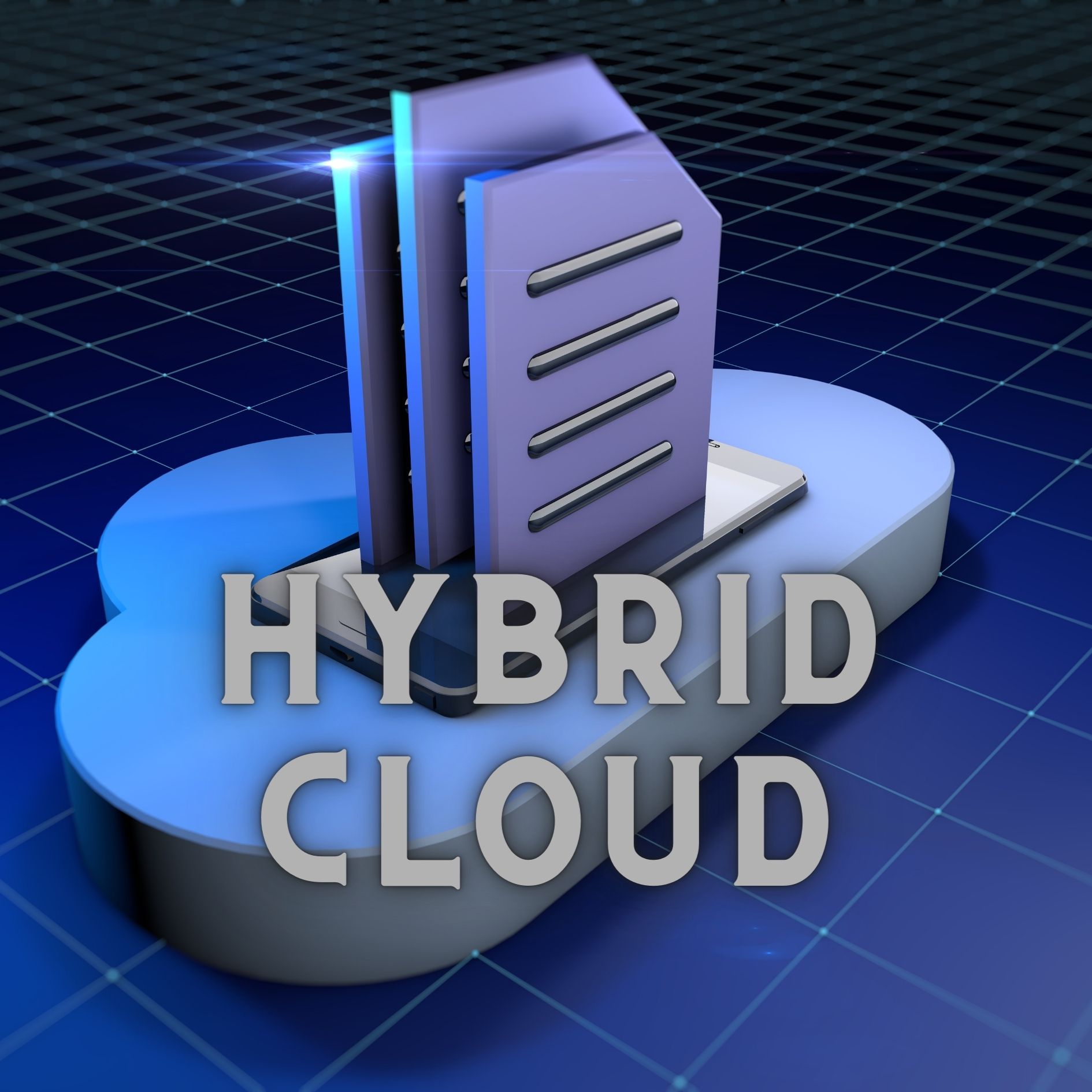Introduction
Cloud computing has brought about a remarkable transformation in the manner in which businesses store and retrieve their valuable data. It offers flexibility, scalability, and cost-effectiveness. However, as technology advances, new solutions emerge to meet the evolving needs of businesses. One such solution is the hybrid cloud. In this article, we will explore the HC concept and its significance as the future of cloud computing.
What is Hybrid Cloud?
Hybrid cloud refers to a cloud computing model that combines public and private clouds, allowing organizations to leverage both benefits. It bridges on-premises infrastructure and public cloud services, creating a seamless and integrated environment.
Understanding the Hybrid Cloud Model
It is essential to understand the three main components for implementing the hybrid cloud: public cloud, private cloud, and hybrid cloud.
Public Cloud:
The public cloud refers to services provided by third-party providers over the Internet. It offers scalability and cost-effectiveness by allowing businesses to pay only for the resources they use. Public cloud services are available to multiple users and are managed and maintained by the service provider.
Private Cloud:
In contrast, the private cloud is exclusively devoted to serving the needs of a single organization, providing them with unparalleled control and privacy over their data. It provides enhanced security and control, hosted on-premises or in a private data center. Private cloud infrastructure is managed and maintained by the organization’s IT department.
Hybrid Cloud:
The hybrid cloud combines the best of both public and private clouds. It allows organizations to leverage the scalability and cost benefits of the public cloud while keeping sensitive data and critical applications in a secure private cloud environment. Hybrid cloud architecture enables seamless integration and data sharing between the two environments.
Benefits
Flexibility and Scalability:
One of the significant advantages of the hybrid cloud is its flexibility and scalability. Organizations can dynamically scale their resources up or down based on demand. It allows businesses to handle peak workloads efficiently and ensures optimal performance without incurring unnecessary costs.
Enhanced Security:
Security is a top concern for businesses when adopting cloud solutions. A hybrid cloud offers enhanced security by enabling organizations to keep sensitive data and critical applications within a private cloud environment. This segregation provides an additional layer of protection, reducing the risk of data breaches and unauthorized access.
Cost Optimization:
A hybrid cloud enables cost optimization by allowing organizations to balance their IT infrastructure costs. Businesses can use the public cloud for non-sensitive and non-critical workloads, using its cost-effective pay-as-you-go model. Critical and sensitive applications can be hosted in a private cloud, ensuring data privacy and compliance.
Improved Performance:
Hybrid cloud architecture allows businesses to optimize performance by strategically placing workloads in the most suitable environment. Applications with high computing requirements can run in the public cloud, while latency-sensitive workloads can be hosted in a private cloud. This approach ensures optimal performance and user experience.
Implementing
Implementing a hybrid cloud strategy involves careful planning and consideration of various factors:
Assessing Workload Requirements:
Begin by assessing your organization’s workload requirements. Identify applications and data that can be moved to the public cloud and those that require the security and control of a private cloud environment.
Identifying the Right Mix:
Determine the right mix of public and private cloud resources based on your workload requirements. Consider data sensitivity, compliance regulations, performance needs, and cost optimization.
Seamless Integration:
Ensure seamless integration between the public and private cloud environments. This process involves establishing secure connections, implementing data synchronization mechanisms, and enabling efficient data transfer between the two environments.
Data Management and Security:
Develop robust data management and security practices to safeguard your organization’s data in the hybrid cloud environment. Implement encryption, access controls, and monitoring mechanisms to ensure data integrity and compliance with regulatory requirements.
Challenges and Considerations
While the hybrid cloud offers numerous benefits, it also presents certain challenges and considerations that organizations must address:
The Complexity of Management:
Firstly, integrating multiple platforms and services can be complex to managing a hybrid cloud environment. It requires public and private cloud technologies expertise to ensure smooth operations and optimal resource utilization.
Data Governance and Compliance:
Organizations must ensure proper data governance and compliance when operating in a HC environment. Different data regulations may apply to public and private clouds, requiring organizations to implement appropriate controls and measures to meet compliance requirements.
Connectivity and Latency:
Connectivity and latency can impact the performance of HC applications. Organizations must establish reliable and high-bandwidth connections between their on-premises infrastructure and the public cloud to minimize latency and ensure seamless data transfer.
Used Cases
Hybrid cloud finds applications in various industries. Here are some notable use cases:
E-commerce Industry:
E-commerce businesses can benefit from the scalability and cost-effectiveness of the public cloud while ensuring the security of customer data in a private cloud environment. Hybrid cloud enables them to handle surges in website traffic during peak shopping seasons while maintaining data privacy.
Healthcare Sector:
In the healthcare sector, the hybrid cloud allows healthcare providers to store and process sensitive patient data securely. It enables collaboration between different healthcare organizations while complying with data privacy regulations.
Financial Services:
Financial institutions can leverage the HC to balance the need for security and compliance with the scalability and agility required for processing large volumes of financial data. A HC enables them to store sensitive customer information securely while utilizing cloud-based analytics and processing capabilities.
Future Trends
As technology evolves, the hybrid cloud is expected to witness several advancements:
Edge Computing Integration:
Firstly, integration of edge computing with the hybrid cloud will enable organizations to process data closer to the source, reducing latency and improving real-time decision-making. This integration will be crucial for applications requiring low latency, such as IoT devices and autonomous vehicles.
AI and Machine Learning:
Secondly, the hybrid cloud will play a significant role in enabling AI and machine learning applications. By combining the power of public cloud resources with on-premises infrastructure, organizations can process large datasets efficiently and derive valuable insights.
Enhanced Automation:
Thirdly, automation will become increasingly important in managing HC environments. Moreover, AI-powered automation tools will streamline operations, optimize resource allocation, and proactively address security and compliance concerns.
Conclusion
Hybrid cloud represents the future of cloud computing, offering a flexible, secure, and cost-effective solution for organizations. By leveraging the benefits of both public and private clouds, businesses can optimize their IT infrastructure, improve performance, and ensure data security. In addition, as technology advances, the HC will continue to evolve, incorporating edge computing, AI, and automation to meet the evolving needs of businesses.
Visit our website to know more!
Follow us on LinkedIn:


